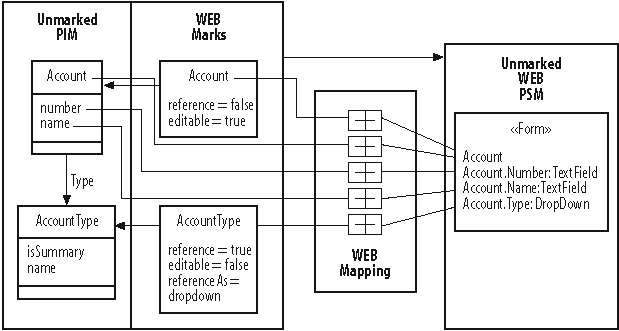Sewing the Models Together
At any one time, the many models are implicitly related. For example, a transformation function transforms the PIM and related marks from a marking model to create a PSM. An MDA system of models probably has several PSMs, each with its own marking model and at least one code model, and likely its own marking model or handcoded extensions.
Over time, the PIM will change, as will the marks on it and on the PSM. If the transformation function summarily overwrites existing marks explicitly updated by a modeler, the effect of the marks disappears; the modeler must reenter all again. Clearly, this is untenable. On the other hand, deletions from the PIM will remove the justification of derived elements in the PSM. The transformation function must have a way to detect and merge collisions, and to remove deadwood. Traceability of ownership and generation becomes a serious issue.
MDA stores the relationships between source models, marks, and target models in a mapping model . The example in Figure A-3 shows how each element in the target model has a mapping to the source model and the appropriate marks (and, optionally, to the marking models).

Figure A-3. Mapping models ensure traceability between the models and the marks
The mappings provide the traceability necessary for subtle evolution of the whole system. The transformation process follows the links when updating ...
Get UML 2.0 in a Nutshell now with the O’Reilly learning platform.
O’Reilly members experience books, live events, courses curated by job role, and more from O’Reilly and nearly 200 top publishers.

